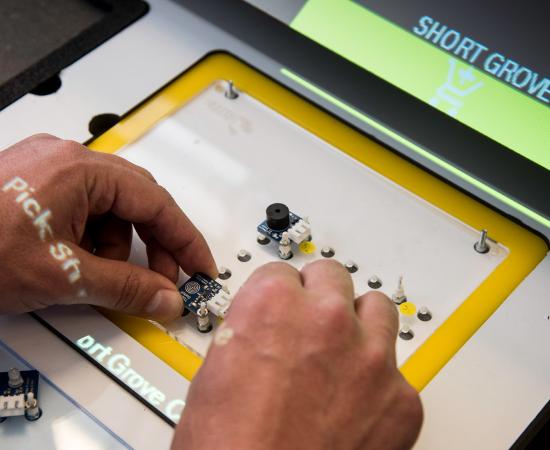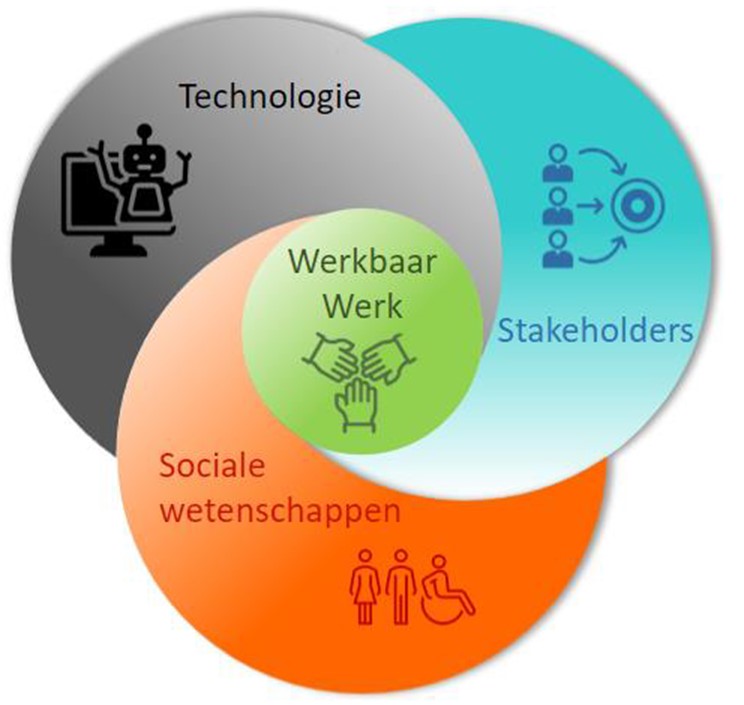
Living Lab | Technology for Workable Employment
The Industry 4.0 Living Lab: 'Technology for Workable Employment” demonstrates the use of technological tools to reduce the physical workload, whereby the project strives for an increased employment rate in the Flemish manufacturing industry.
Context
Labour market under pressure
The Flemish labour market is under severe pressure. Many companies have difficulty filling their vacancies. To tackle this shortage, it is important not only to get as many people as possible into work, but to ensure that they also stay employed. Workable employment is a significant lever in this respect.
A workable job is a job that does not cause you to overwork or make you sick, that is motivating, offers learning opportunities and leaves enough room for your private life. In short, a job that you can hold onto for a long time in a healthy and safe working environment. That means a place where the workload is taken into account.
Attention to physical load
According to the 2019 Employability Survey, 15% of Flemish employees work under physically taxing conditions. This concerns people primarily who have to make a lot of repetitive movements. The Vlaamse Beroepsvereniging voor Ergonomie (VerV) Flemish Professional Association for Ergonomics states that 57% of all work-related health complaints in Belgium are due to physical strain. This results in long-term absence, early invalidity and job loss.
Goal
The Industry 4.0 Living Lab: “Technology for Workable Employment” demonstrates the use of technological aids to reduce the physical workload. In addition, attention is paid to the mental workload of employees and improving the organization of, for example by optimizing internal processes.
With technological support for more workable employment, the project strives for an increased employment rate in the Flemish manufacturing industry. The project aims to reach a wide audience over a period of three years, whereby we want to raise awareness among 750 companies through participation in workshops and encourage 50 companies to develop a strategic plan for workable employment through orientation actions.
Approach
The project takes a unique approach by mapping needs and requirements through a set of personas on the one hand, and by investigating the status of industrially deployable technical tools with the help of nine technology demonstrators among the implementing partners on the other. Both are linked to each other to gain insights into the usability, feasibility and effectiveness of the solutions.
This comprises:
- Assessing the usability of new Industry 4.0 solutions or methodologies for improving the workability of jobs in the production environment;
- Increasing the knowledge level of the target group by introducing these techniques in phases;
- A tailor-made assessment for specific personas and production environments in which the experiences of the operator are mapped out.
To this end, the project actively involves companies, midfield organizations, the VDAB [Public Employment Service of Flanders] and personas. Various intersections between needs (proposed by the personas) and technological support (proposed by a demonstrator) can be linked and studied, through this approach, whereupon the results will be specifically disseminated to the various stakeholders (companies and civil society organizations) during the project. These stakeholders can also build on the results after the end of the living lab.
Sirris continues to build on the application lab in Kortrijk with a thematic focus on collaborative robots, digital operator support, digital integration of the various entities, optimal material presentation, logistics flow and quality control. The lab contains an assembly line starting from the order to the final product consisting of six different cells, each with its own activities. This line can function as a model for different operators or for one operator who has to carry out different activities. The dependencies or relations between the different process steps are taken into account.
Target group
The project partners will work closely with (custom) companies, sector organizations and social partners. They will moreover focus not only on the classic manufacturing industry, but on all areas where physical products are made or handled, including the construction and logistics sectors.
Reference
VLAIO (Flanders Agency for Innovation and Entrepreneurship) Industry 4.0 Living Lab: 'Technology for Workable Employment
Project partners
Sirris
Flander Make
imec
Sirris
HIVA


